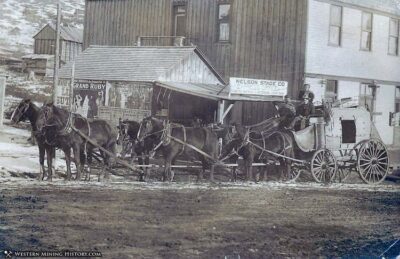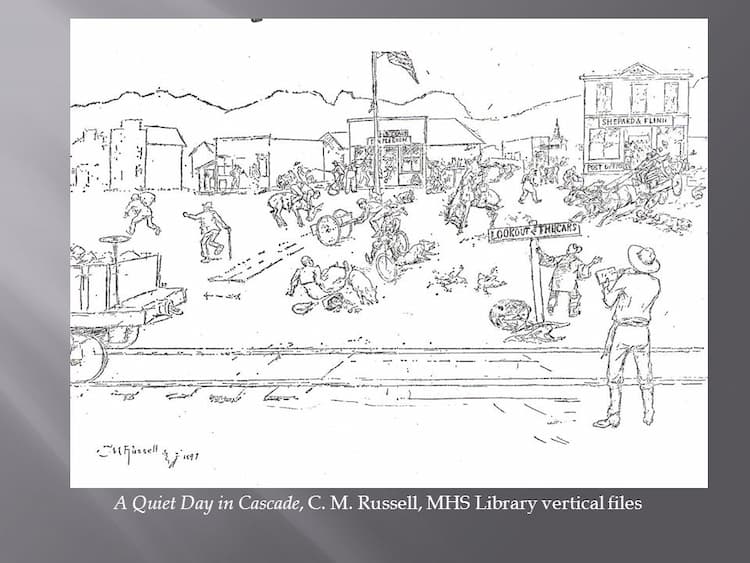Mary Fields (1832-1914) was 𝐛𝐨𝐫𝐧 into slavery in Hickman County, Tennessee, in about 1832. She received her freedom when the war ended and slavery was outlawed. However, she continued to live near her original owners, the Dunn family. She and the Dunns’s daughter, Dolly, became good friends.

Growing Up
Dolly Dunn chose to devote herself to hte church and became a nun. She moved to Toledo, Ohio, and Mary Fields went along with her, feeling she would find someting to do. Dolly eventually became known as Mother Amadeus. She was offered a position at a mission school for Native American girls in Cascade, Montana. It was about 25 miles southwest of Great Falls.
In 1885, Mother Amadeus became quite ill and asked that Mary be summoned from Ohio. Mother Amadeus had pneumonia and she wanted the comfort of her 𝘤𝘩𝘪𝘭𝘥hood companion.
Arriving in Montana
Mary Fields was well-suited for the West. She was 6 feet tall and weighed about 200 pounds. In addition to her size, her clothing was right for the rugged life of Montana. She wore trousers under her skirt to keep warm. An apron covered her skirt but was often used to hide her gun, which she was not afraid to use.
Despite her propensity for alcohol and cigars, Mary Fields was a valued member of the staff. She also was not afraid to speak her mind. After she was involved in a brawl in town over a harness, the bishop ordered Mother Amadeus to fire her.
Star Route for the Postal Service

Western Mining Company
Shortly after this, the U.S. Postal Service was looking for someone who could handle the Star Route in central Montana. (In the West, the Postal Service still accepted bids for mail routes through lightly populated areas. This particular route was from St. Peter’s Mission where Mary Fields had worked to the town of Cascade. It was only 34 miles round trip, but between the dirt roads, the fierce winter storms, and the threat of wolves coming down from the mountains, it was a treacherous job. .
Mary was hired for the job in 1895. (She would have been in her early sixties.) Fields became a frequent sight, driving six horses and wagon, along with her mule Moses, on the central Montana mail route. The weather never stopped her, though if the snow was too deep, she wore snowshoes and delivered the mail on foot.
Historian Roger D. Hardaway relates an anecdote where Fields was caught in a blizzard that obscured the road….”She had to stop the wagon and walk back and forth all night to keep from freezing to death.” He also found a report when wolves surrounded her wagon, threatening an attack on her supplies. She kept them away.
Her personality and integrity earned her the name Stagecoach Mary.

Wanted a Change
After more than eight years of delivering the mail, Mary decided it was time to retire. She built her home in Cascade and opened a laundry. Mary Fields often ended her day with a drink and a cigar at the local saloon with the men of the community. She earned respect from them for her business savvy.
One day a fellow who had not paid is laundry bill came into the saloon. Mary saw him, and she stepped up behind him and knocked the man down. She then put her foot on his chest and wouldn’t let him up until he agreed to pay the bill. After that, customers made sure their laundry bill was paid up.
Mary Fields became a beloved part of the town. Sometimes she made herself available to help local mothers with their 𝘤𝘩𝘪𝘭𝘥ren. She loved baseball and before each town game, she presented the players with buttonhole bouquets from her garden.
Everyone knew Mary. When cowboy artist Charles Russell (1864-1926) moved to Cascade, Montana, for a time, he sketched what he most enjoyed about the town. In his illustration, he teased Mary, drawing her by a basket of spilled apples. The sketch indicates she was knocked down by a hog running through town.
The town adored her. They declared her 𝐛𝐢𝐫𝐭𝐡day to be a town holiday and closed the school on that day.
In 1914, Stagecoach Mary died of liver failure. The whole town attended her funeral.
